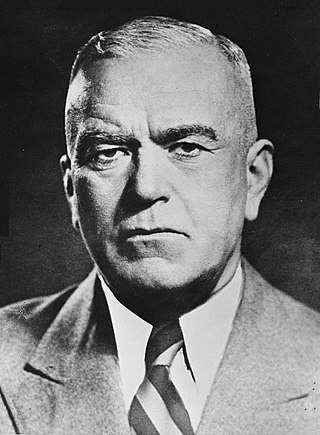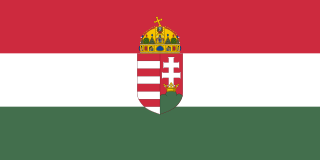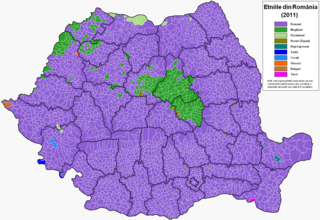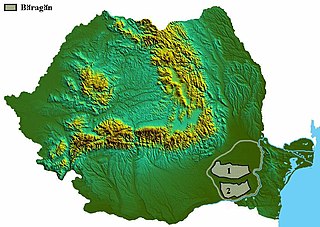
The Potsdam Agreement was the agreement between three of the Allies of World War II: the United Kingdom, the United States, and the Soviet Union on 1 August 1945. A product of the Potsdam Conference, it concerned the military occupation and reconstruction of Germany, its border, and the entire European Theatre of War territory. It also addressed Germany's demilitarisation, reparations, the prosecution of war criminals and the mass expulsion of ethnic Germans from various parts of Europe. France was not invited in the conference but formally still one of powers occupying Germany.

During the later stages of World War II and the post-war period, Germans and Volksdeutsche fled and were expelled from various Eastern and Central European countries, including Czechoslovakia and the former German provinces of Silesia, Pomerania, and East Prussia, which were annexed by Poland and the Soviet Union. The idea to expel the Germans from the annexed territories was proposed by Winston Churchill, in conjunction with the Polish and Czechoslovak exile governments in London at least since 1942. Polish prime minister Tomasz Arciszewski supported the annexation of German territory, but opposed the idea of expulsion, wanting instead to naturalize the Germans as Polish citizens and to assimilate them.
Mass evacuation, forced displacement, expulsion, and deportation of millions of people took place across most countries involved in World War II. A number of these phenomena were categorised as violations of fundamental human values and norms by the Nuremberg Tribunal after the war ended. The mass movement of people – most of them refugees – had either been caused by the hostilities, or enforced by the former Axis and the Allied powers based on ideologies of race and ethnicity, culminating in the postwar border changes enacted by international settlements. The refugee crisis created across formerly occupied territories in World War II provided the context for much of the new international refugee and global human rights architecture existing today.

Petru Groza was an Austro-Hungarian-born Romanian politician, best known as the first Prime Minister of the Communist Party-dominated government under Soviet occupation during the early stages of the Communist regime in Romania, and later as the President of the Presidium of the Great National Assembly from 1952 until his death in 1958.

Nicolae Rădescu was a Romanian army officer and political figure. He was the last pre-communist rule Prime Minister of Romania, serving from 7 December 1944 to 1 March 1945.

Reghin is a city in Mureș County, Transylvania, central Romania, on the Mureș River. As of 2011, it had a population of 33,281.

The Transylvanian Saxons are a people of mainly German ethnicity who settled in Transylvania in various waves, starting from the mid and mid-late 12th century until the mid 19th century.

Northern Transylvania was the region of the Kingdom of Romania that during World War II, as a consequence of the August 1940 territorial agreement known as the Second Vienna Award, became part of the Kingdom of Hungary. With an area of 43,104 km2 (16,643 sq mi), the population was largely composed of both ethnic Romanians and Hungarians.

The Danube Swabians is a collective term for the ethnic German-speaking population who lived in various countries of central-eastern Europe, especially in the Danube River valley, first in the 12th century, and in greater numbers in the 17th and 18th centuries. Most were descended from earlier 18th-century Swabian settlers from Upper Swabia, the Swabian Jura, northern Lake Constance, the upper Danube, the Swabian-Franconian Forest, the Southern Black Forest and the Principality of Fürstenberg, followed by Hessians, Bavarians, Franconians and Lorrainers recruited by Austria to repopulate the area and restore agriculture after the expulsion of the Ottoman Empire. They were able to keep their language and religion and initially developed strongly German communities in the region with German folklore. Thousands also came from Eastern Europe.

About 10.5% of Romania's population is represented by minorities. The principal minorities in Romania are Hungarians and Romani people, with a declining German population and smaller numbers of Poles in Bukovina, Serbs, Croats, Slovaks and Banat Bulgarians, Ukrainians, Greeks, Jews, Turks and Tatars, Armenians, Russians, Afro-Romanians, and others.

The Germans of Romania represent one of the most significant historical ethnic minorities of Romania, both nowadays and during its past as well, stretching back in time to its foundation as the Kingdom of Romania in the late 19th century.

Biertan is a commune in Transylvania, Romania, in the north of the Sibiu County, 80 km north of Sibiu and 29 km east of Mediaș. Biertan is one of the most important Saxon villages with fortified churches in Transylvania, having been on the list of UNESCO World Heritage Sites since 1993. The Biertan fortified church was the seat of the Evangelical Lutheran Bishop in Transylvania between 1572 and 1867.

The Soviet occupation of Romania refers to the period from 1944 to August 1958, during which the Soviet Union maintained a significant military presence in Romania. The fate of the territories held by Romania after 1918 that were incorporated into the Soviet Union in 1940 is treated separately in the article on Soviet occupation of Bessarabia and Northern Bukovina.
Order 7161 is the top secret USSR State Defense Committee Order no 7161ss of December 16, 1944 about mobilisation and internment of able-bodied Germans for reparation works in the USSR. It was part of the organisation of forced labor of Germans in the Soviet Union since the ending period of World War II.

Forced labor of Germans in the Soviet Union was considered by the Soviet Union to be part of German war reparations for the damage inflicted by Nazi Germany on the Soviet Union during the Axis-Soviet campaigns (1941-1945) of World War II. Soviet authorities deported German civilians from Germany and Eastern Europe to the USSR after World War II as forced laborers, while ethnic Germans living in the USSR were deported during World War II and conscripted for forced labor. German prisoners of war were also used as a source of forced labor during and after the war by the Soviet Union and by the Western Allies.

The Banat Swabians are an ethnic German population in the former Kingdom of Hungary in Central-Southeast Europe, part of the Danube Swabians and Germans of Romania. They emigrated in the 18th century to what was then the Austrian Empire's Banat of Temeswar province, later included in the Habsburg Kingdom of Hungary, a province which had been left sparsely populated by the wars with the Ottoman Empire. At the end of World War I in 1918, the Swabian minority worked to establish an independent multi-ethnic Banat Republic; however, the province was divided by the Treaty of Versailles of 1919, and the Treaty of Trianon of 1920. The greater part was annexed by Romania, a smaller part by the Kingdom of Serbs, Croats and Slovenes and a small region around Szeged remained part of Hungary.

Demographic estimates of the flight and expulsion of Germans have been derived by either the compilation of registered dead and missing persons or by a comparison of pre-war and post-war population data. Estimates of the number of displaced Germans vary in the range of 12.0–16.5 million. The death toll attributable to the flight and expulsions was estimated at 2.2 million by the West German government in 1958 using the population balance method. German records which became public in 1987 have caused some historians in Germany to put the actual total at about 500,000 based on the listing of confirmed deaths. The German Historical Museum puts the figure at 600,000 victims and says that the official figure of 2 million did not stand up to later review. However, the German Red Cross still maintains that the total death toll of the expulsions is 2,251,500 persons.

The Bărăgan deportations were a large-scale action of penal transportation, undertaken during the 1950s by the Romanian Communist regime. Their aim was to forcibly relocate individuals who lived within approximately 25 km of the Yugoslav border to the Bărăgan Plain. The deportees were allowed to return after 1956.
The presence of German-speaking populations in Central and Eastern Europe is rooted in centuries of history, with the settling in northeastern Europe of Germanic peoples predating even the founding of the Roman Empire. The presence of independent German states in the region, and later the German Empire as well as other multi-ethnic countries with German-speaking minorities, such as Hungary, Poland, Imperial Russia, etc., demonstrates the extent and duration of German-speaking settlements.

The forced labour of Hungarians in the Soviet Union in the aftermath of World War II was not researched until the fall of Communism and the dissolution of the Soviet Union. While exact numbers are not known, it is estimated that up to 600,000 Hungarians were deported, including an estimated 200,000 civilians. An estimated 200,000 perished. Hungarian forced labour was part of a larger system of foreign forced labour in the Soviet Union.
















